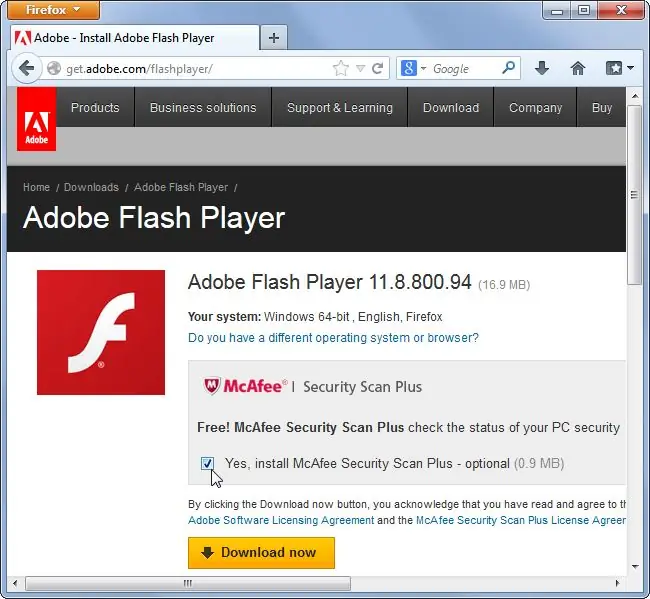- Author Lauren Nevill [email protected].
- Public 2023-12-16 18:48.
- Last modified 2025-01-23 15:15.
The internet is littered with pitfalls for novice users. Fake "Download" buttons are actually advertisements. Many users do not know how to avoid unwanted programs when installing software.
Instructions
Step 1
Fake download links.
The first and most common pitfall when downloading free software is a fake download link or multiple fake download links. Web pages often have a large, brightly colored button with the text "Free Download" or "Download Now" or "Free Download". This is most often a banner ad designed to mimic a real download link. You can detect a fake download link by simply hovering over it, looking at the link where it leads.
In the example below, the fake "Download" link leads to the page "googleadservices.com". Knowing this, we can easily understand that this link is clearly of an advertising nature. If we hover over the download link "Start Download", we will see that it leads to "winaero.com" - the site where we are located.

Step 2
Additional software for web pages
Even legal ones. popular software vendors force downloads of additional unwanted software. For example, when downloading Flash Player from Adobe from the manufacturer's official page, the additional program McAfee Security Scan Plus is installed by default. Users who have left the default will download this program to their computer.
To avoid this kind of stuff, be careful and careful when loading. Before downloading, remove the icon from additional software that is not required for installation.

Step 3
Remove unwanted programs and return to system settings
If you accidentally install unwanted software on your computer, then it must be removed, which is sometimes quite difficult. To do this, click the "Start" button, then "My Computer" and open the "Add or Remove Programs" tab on the left. Find the unwanted program in the list and click Uninstall.






